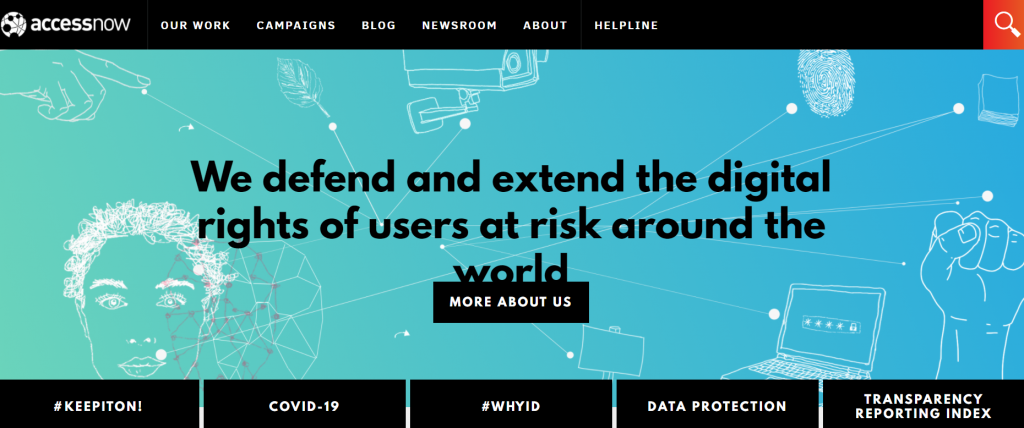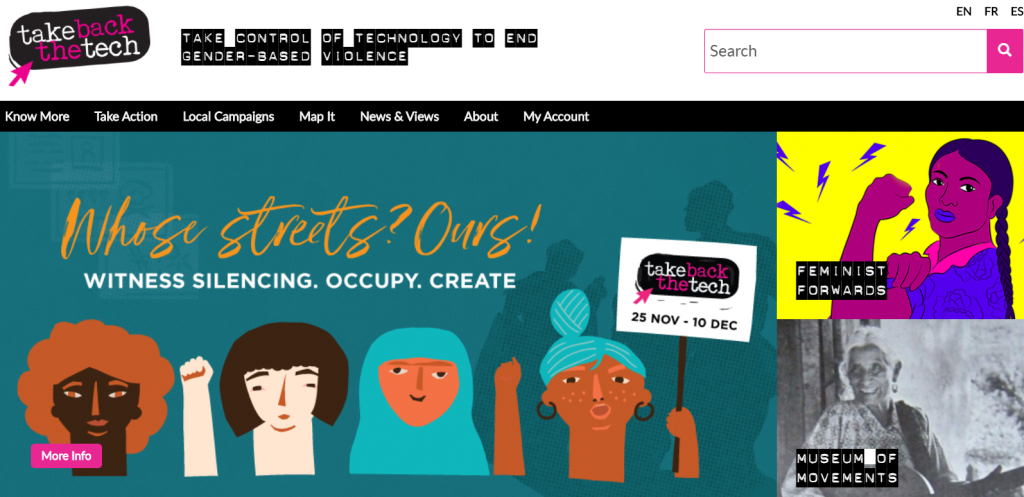Welcome to my fourth blog post in the series gender, development & ICTs. In the following post, I am concerned with the role technology can play in online and offline harassment and gender-based violence, and how ICT can be used as part of the solution.
What role can ICTs play in online and offline harassment and violence?
Much literature has emphasised the potentially positive impact of ICTs, but technology does not always have an empowering effect (Hassan et al 2018). The use of technology will not automatically lead to positive results and empowerment but can also be used to victimise and target people.
Research suggests that when girls and women can access the internet, they encounter online discrimination and violence more often than men. The digital gender divide and women generally having lower digital skills than men are some contributors to them being more at risk of cyberviolence. Women with multiple identities, for example, being indigenous, belonging to an ethnic minority or the LBTQI community, or being visual in the public space e.g. as politicians or human rights defenders are also especially targeted online (UN Women 2020).
During the Covid-19 pandemic, women and girls have used the internet and social media more frequently. At the same time, we have seen an increase in online gender-based violence and abuse among others in terms of online stalking, sexual harassment, sex trolling, and zoom-bombing (UN Women 2020). There has for example been a surge in reported incidents of ‘zoom-bombing’ implying shouting or sharing sexually or racially charged content to participants during a video call, and women have shared stories of sex trolling and receiving non-consensual intimate images online.

Thakur (2018) argues that online interaction has the potential to increase the risk of abuse and violence against women. The fact that communication takes place electronically at a distance rather than face-to-face can lead to a reduced sense of empathy for people. The possibility of staying anonymous can further encourage aggressive behaviour as the perpetrators are unlikely to face any consequences. The fact that many carry mobile devices with them all the time, Hassan et al (2018) argue, also gives people easy access to social media and online platforms and the possibility to instantly react to emotions online.
Connections between online and offline violence
With his study, Thakur (2018) shows a connection between online gender-based harassment and violence in Jamaica and the offline society affected by systemic gender-based discrimination. ICTs mirror the surrounding society, he argues, and can even be used to escalate stalking and abuse. During his research in Jamaica, he brought to light some of the ways that male partners would try to control and monitor their female partner´s activities online on for example social media, but also how such information was used to check private conversations and keep track of who the women met up with offline.
Moreover, online violence and abuse often have severe impacts on girls’ and women’s offline realities. Many experience a loss of self-esteem, feelings of depression, and anxiety. With their study of sexual harassment in Pakistan, Hassan et al (2018) also show that in some societies, shame can be perceived to be brought upon the whole family and lead to consequences such as the confiscation of devices, restrictions of girls’ movement, forced marriage, and in worst case suicide.
During the global pandemic where many have lived under quarantine and been isolated from social networks, one can only imagine the impact online abuse and harassment has on people.
How can tech be used to prevent harassment and violence online and offline?
On the contrary, ICTs can also be used specifically as a part of the solution. They can enable debates and offer space to challenge and fight harassment and violence, both online and offline. Thakur (2018) emphasises how victims for example can share their experiences with others online, access support groups, and find legal resources. Technology also gives people the possibility to organise and campaign for better rights and to fight misogyny. Moreover, ICT can be used to inform about safer online behaviours, raise awareness about the harm and consequences of online abuse, and create debates about differences between freedom of expression and online harassment.
Many global initiatives exist to counter digital violence and harassment against women and girls. The International Telecommunication Union (ITU), in cooperation with among others UN Women, launched the global partnership EQUALS for digital gender equality in 2016 (UN Women 2020), and the Association of Progressive Communication (APC) together with Women Human Rights Defenders International Coalition have influenced UN bodies to further highlight women’s rights and safety online and offline (SIDA 2015).
The internet is also full of examples of social media campaigns like the global #MeToo and local #mydressmychoice in Kenya and online platforms such as SafetiPin in India and the global Hollaback! seeking to challenge harmful gendered social norms and change laws.
Below we will have a look at some initiatives seeking to challenge power relations, raise awareness, and provide services to combat harassment and violence against gender groups.
Online initiatives
Access Now
The non-profit organisation Access Now was founded in 2009 and is concerned with defending the digital rights of internet users and supporting people (more often women) at risk. The free 24/7 Digital Security Helpline is available worldwide in eight languages and offers technical assistance to people at risk and emergency assistance for those already experiencing issues. Access Now also works to influence decision-makers and strengthen human rights protections, advocates for digital security and seeks to mobilise global internet users to take action.

Take Back the Tech!
The global campaign Take Back the Tech! raises awareness about the connection between ICT and harassment and violence against women, queer, and gender diverse people. The project was founded in 2006 by the Association for Progressive Communication’s Women’s Networking Support Programme (APC WNSP) and is a collaborative movement made up of individuals, organisations, and communities. Especially women and girls are encouraged to take back control of ICT and instead use technology to take action to end discrimination and gender-based violence. On the website, one can find resources about digital safety, materials and kits to participate in campaigns, and read about ICT solutions from around the world working to create a safe digital space for all.

HarassMap
The project and online platform HarassMap was launched in 2010 in Egypt to help women avoid harassment. By using text messaging on mobile phones, women can anonymously report incidents of sexual harassment in Arabic or English. The reported events are mapped on the public website and both the location and details given about the incident can be accessed online. The purpose is to encourage the collective to stand together in reporting and acting on sexual harassment that one has either experienced personally or been witness to.
Co-founder Rebecca Chiao argues that to stop harassment, society must come together to stop tolerating and making excuses for harassing behaviour. She explains that despite sexual harassment being a crime according to Egyptian law it is seldom enforced. Victims or bystanders rarely report incidents as the police make excuses for the harassers and do not take the issue seriously enough. Therefore, HarassMap runs public campaigns to change a culture that often blames the victim and tolerates sexual harassment. They also cooperate with different institutions to provide training and awareness about harassment and encourage people to use the law to hold harassers responsible.

As development practitioners, we must keep in mind that technology is not neutral and does not take place in a vacuum but is shaped by society. As Thakur (2018) argues, then unless ICTs are purposefully designed to challenge social structures, they can easily be used to facilitate and escalate online forms of harassment and gender-based violence.
References
Hassan, B., Unwin, T. & Gardezi, A. (2018) Understanding the Darker Side of ICTs: Gender, Sexual Harassment, and Mobile Devices in Pakistan. Information Technologies & International Development. Vol. 14, 1-17.
Thakur, D. (2018) How do ICTs mediate gender-based violence in Jamaica? Gender & Development. Vol. 26(2), 267-282.
Online resources
Podcast: The Wild and Curious – Episode 11: Rebecca Chiao of HarassMap (12 August 2020)
SIDA (2015) – Gender and ICT
UN Women – Online and ICT facilitated violence against women and girls curing COVID-19


